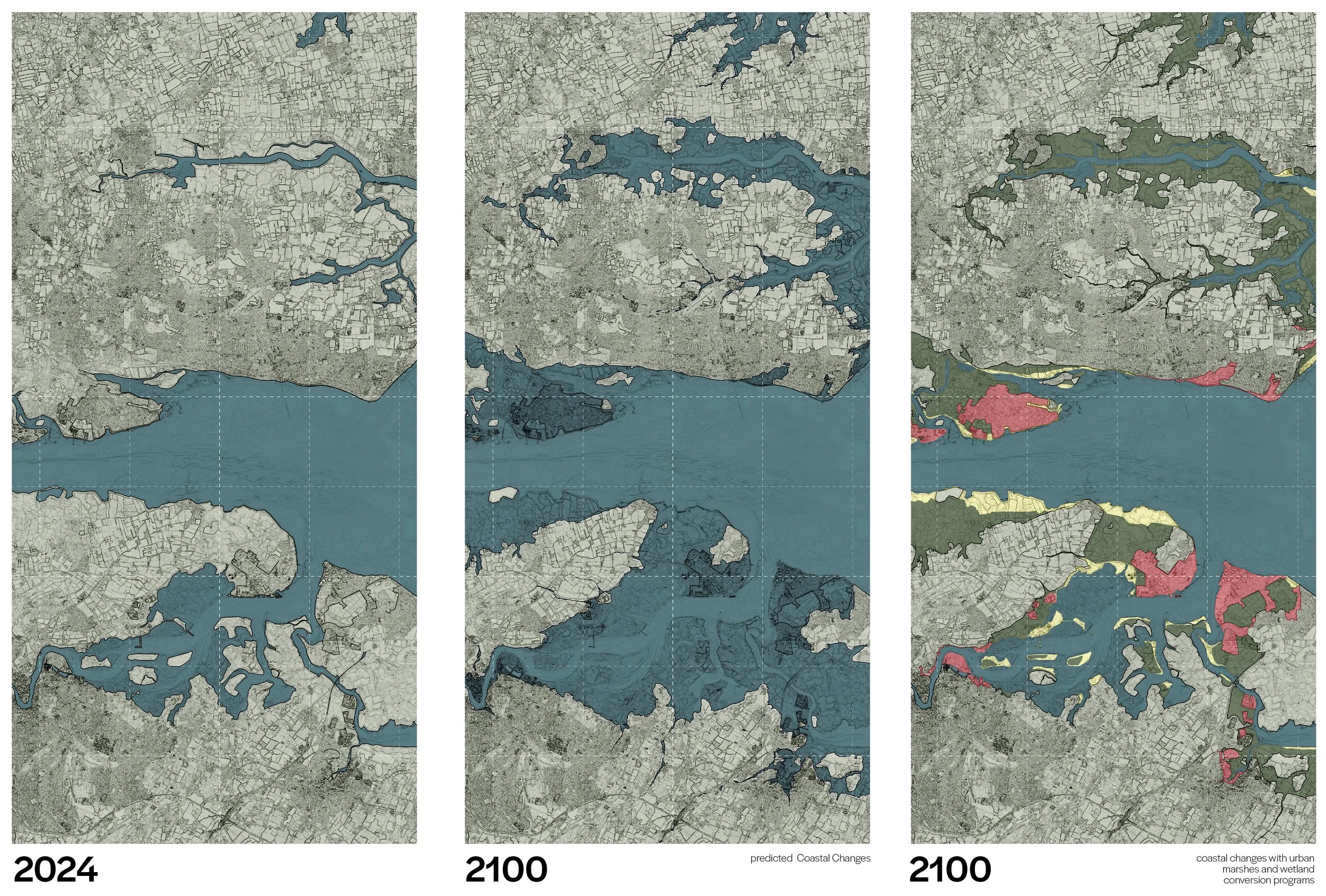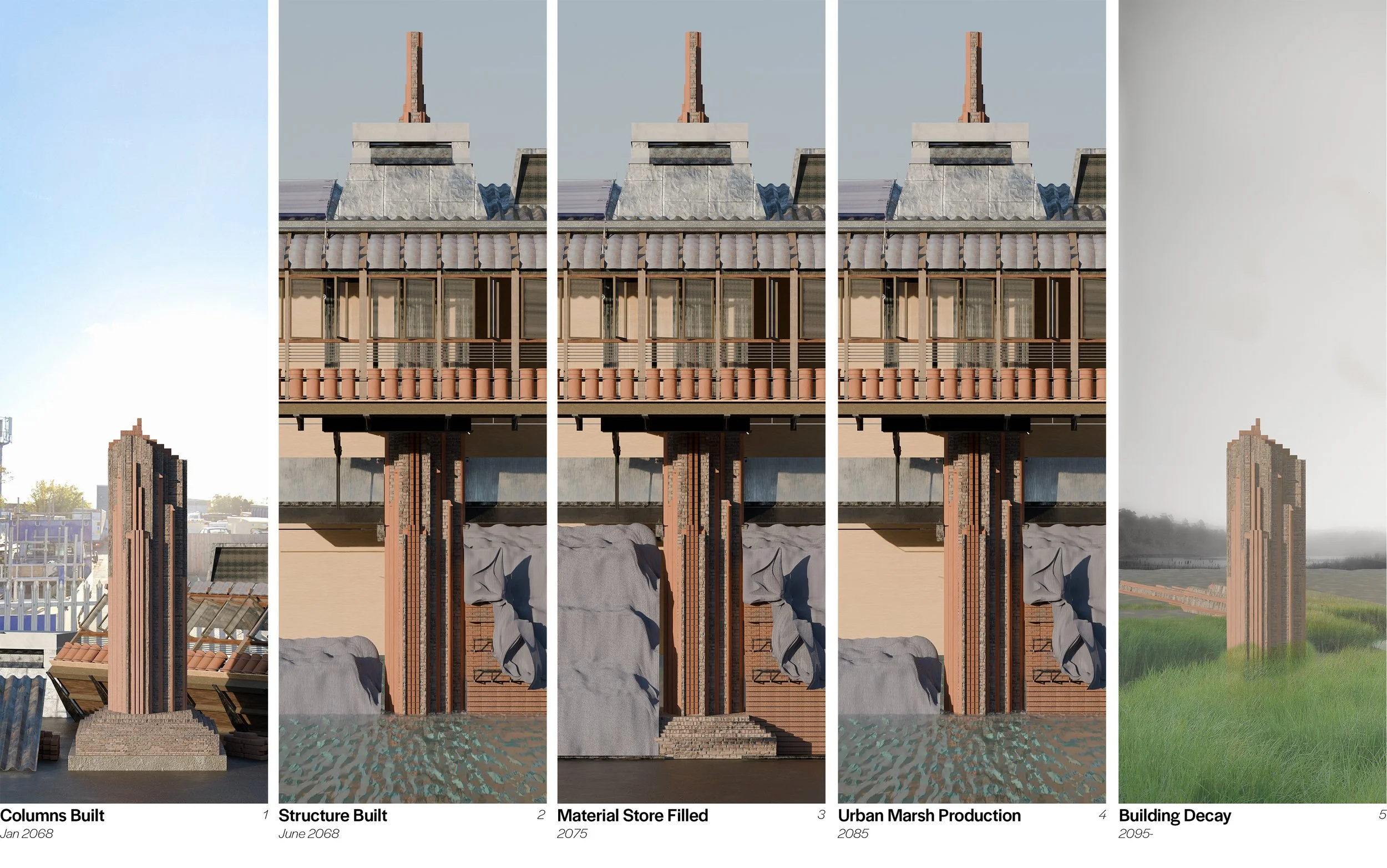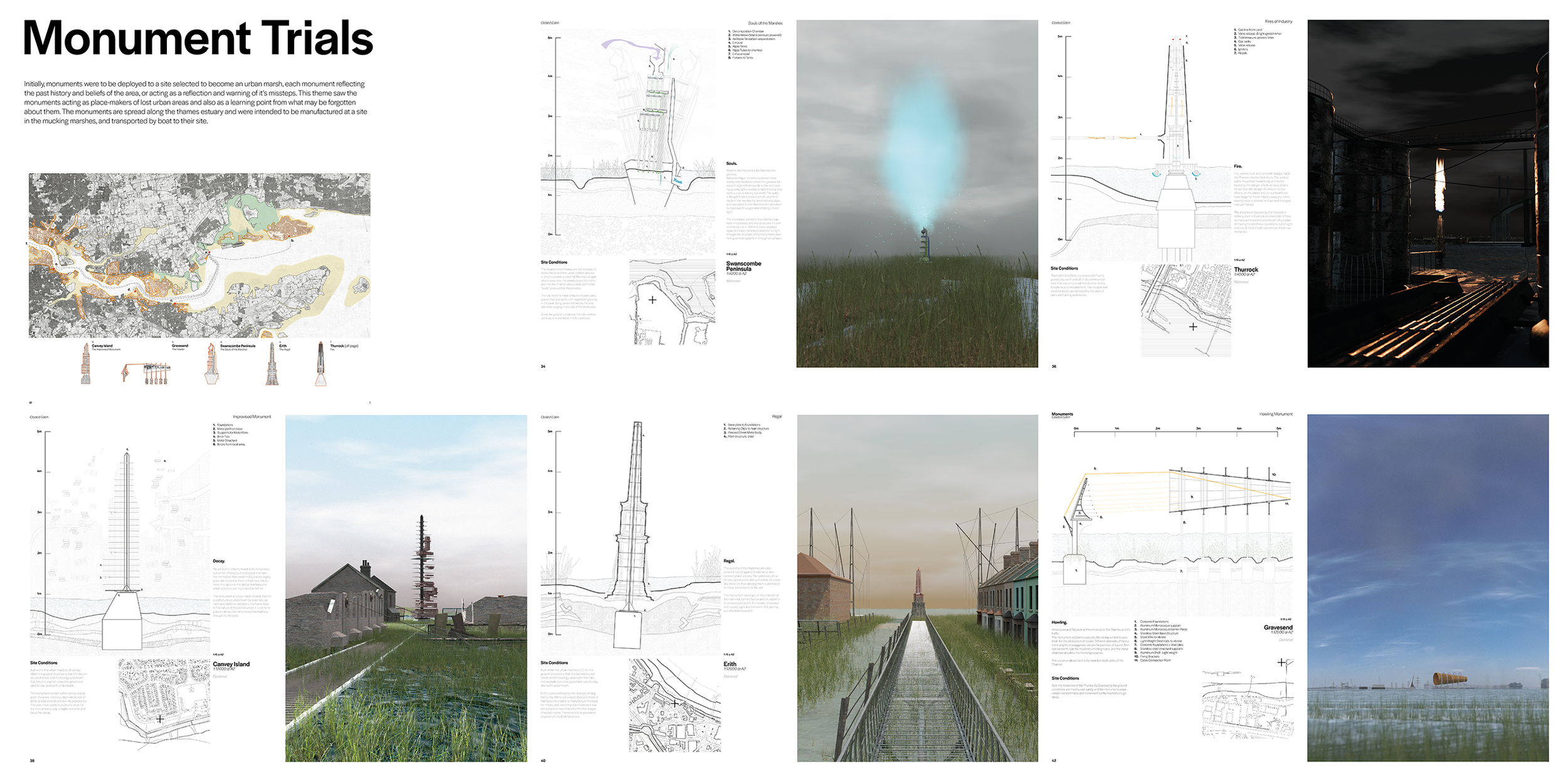Ian Wille Yr 4
Ceded Eden Political turbulence, climate change and coastal towns out of luck. Imposed artificial flood defences demand continual repair and enhancement as global warming increases, and are inherently vulnerable to our own political and economic turbulence. The Sheerness Urban Marsh Council, est. 2061, is experimenting with combining artificial and natural flood defences, by allowing selective urban areas to flood, and preparing them to flourish as marshes once flooded. The aim of this Council is to create a more self-sustaining form of artificial flood defence, combining both natural and manufactured elements.
These urban marshes are fundamentally similar to conventional wetlands, filled with plants able to regulate water levels, condition soils and sequester carbon. The urban marshes differ by using buildings and implemented infrastructure to absorb the force of tidal surges, create overflow reservoirs and allow for vegetation to grow at a higher density than a conventional wetland.
The council building is central to this process, selectively recycling houses and reusing their materials to create itself, and storing excess materials for manufacture of the infrastructure necessary to produce an urban marsh. The project’s life cycle follows the creation of the marsh. Materials collected form the walls of the building’s ground floor, becoming depleted, as production of the marsh advances. When the area is fully transformed, all that remains of the building is a series of highly embellished, yet decaying columns, sinking into the newly formed urban marsh land around it.
Living detached from conventional amenities, the building becomes self-sufficient through the use of two monuments. The monuments, at the centre of the project, transform water, sunlight, oxygen and organic waste into gas, drinking water and electricity through the use of an anaerobic digester and De Laval steam turbine.
Back to Super-Wicked 2024










